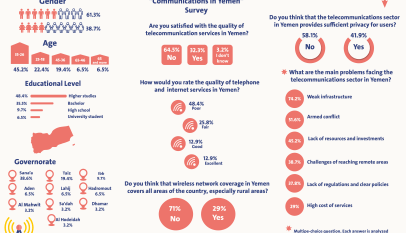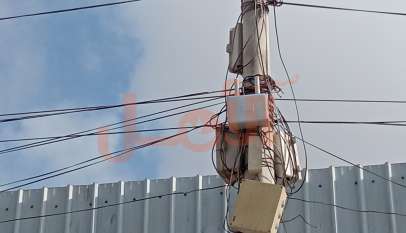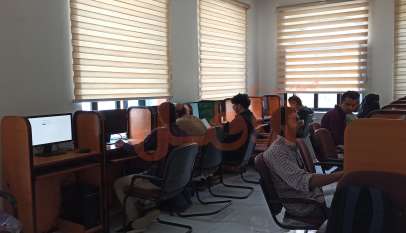4G in Yemen: The Most Prominent Telecommunications Services
Sawt Al-Amal (Voice of Hope) -Yasmine Abdulhafeez
In light of the conflicts and unstable situation faced by Yemen, internet service serves as a lifeline that keeps Yemenis connected to the world. It provides them with opportunities for education, work, and commerce. The internet is the best means to access information and engage in various business and economic activities. Despite the distances between people, it has facilitated interactions at a lower cost.
Moreover, the internet has played a crucial role in providing remote education opportunities for students across Yemen. It has enhanced educational prospects for everyone by giving rise to numerous high-quality educational platforms. Additionally, the internet has facilitated trade between Yemen and the world, contributing to the development of the national economy. It has also led to the emergence of several e-commerce stores catering to Yemenis both domestically and internationally.
During the COVID-19 pandemic, internet service played a crucial role. It was heavily relied upon for business operations, education (both for school and university students), and participation in workshops and training sessions through various available applications, both in audio and visual formats.
The significance of internet service in Yemen extends beyond this period alone. It continues to be essential across all fields and sectors due to the urgent need for connectivity. Yemenis cannot imagine life without this vital service, which enables communication with others—be it individuals, companies, institutions, or organizations. Additionally, the internet has facilitated entertainment opportunities for Yemenis amidst challenging circumstances and has contributed to alleviating psychological stress.
The 4G Service
In 2018, 4G service was introduced in Yemen, marking a modern communication technology characterized by fast data transmission and reception. It carried significant hopes for Yemenis in terms of improving communication quality and opening new avenues for economic development, especially in areas with weak internet networks.
4G service boasts rapid data transfer speeds, a key advantage of this fourth-generation technology. It enables users to download files and browse the internet more swiftly. Additionally, it enhances the quality of internet-dependent services such as video calls and live streaming. Compared to previous services, 4G is more efficient and also reduces energy consumption.
An expert in the field of communications, who preferred not to disclose their name, clarified that 4G service is one of the latest communication technologies. It stands out for its efficiency, cost-effectiveness, rapid deployment, and high data transfer speeds. It facilitates seamless communication among people and keeps pace with modern global telecommunications and information technologies. Furthermore, it enhances Yemen’s ability to attract foreign investments and improve its position in the global economy.
However, this service faces several challenges. Weak telecommunications infrastructure hinders widespread adoption of 4G. Difficulties in accessing specialized equipment such as antennas for cellular broadcasting and fiber optics also persist. Additionally, the cost of 4G service in Yemen is relatively high compared to other countries, limiting many Yemenis’ ability to subscribe to the service. Security concerns in certain regions further complicate the deployment of broadcasting and fiber optic antennas. Raising awareness about the importance and benefits of this service at the societal level remains crucial.
The source adds, “Some antennas are difficult to access for maintenance due to their placement in high mountainous areas. Additionally, many of them are located in conflict zones, making it challenging for specialists and work teams to reach them.”
4G service, in many Yemeni governorates, faces numerous obstacles that hinder its continuity. There are more than six disabled stations and towers, including those in Taiz city—specifically, the Defense Tower (SoftTel Tower), Al-Arous Tower, Asaifarah Tower, and Samn and Saboon Towers.
The source further discusses a set of proposals to enhance 4G service in Yemen. This includes engaging relevant authorities in the telecommunications and information technology sector to collaborate with foreign countries that manufacture central units and stations, such as China and France. These collaborations would facilitate expansion in line with technological advancements. Other proposed solutions involve replacing outdated antennas with new ones and conducting general maintenance on all stations and towers, especially those affected by conflict.
Features of the 4G Service
Khaled Qarmoush, a telecommunications engineer, explains that 4G service is the latest technology in mobile phone and information communication for Yemen. It provides significantly faster data download speeds compared to previous generations. The data service can reach speeds of approximately 100 megabits per second, compared to just 10 megabits per second for 3G. This means faster file downloads and video streaming.
Moreover, 4G networks have lower latency, resulting in quicker responses when using applications or playing online games. Additionally, they consume less energy compared to previous-generation networks, which means your phone’s battery life will last longer.
Continuing, 4G networks support new technologies such as LTE Advanced and LTE-A Pro, which can provide data speeds of up to 1 gigabit per second. These advancements also excel in high-definition video streaming without interruptions.
Furthermore, improving the performance of mobile phone networks across all services will contribute to economic growth in the telecommunications sector. It will facilitate business operations and communications both domestically and internationally. The ongoing development of 4G networks is expected to lead to broader coverage across various parts of the country in the coming years. Additionally, there is already a new generation of cellular communication technology under development called 5G, which offers significantly faster data speeds than 4G.
Regarding the challenges facing the 4G network, Khaled Qarmoush, a telecommunications engineer, points out that in Yemen, 4G service encounters several obstacles affecting its spread and stability. Notably, the ongoing conflict since 2015 across various Yemeni provinces has led to the destruction of infrastructure in many areas, including communication towers. The repercussions of this prolonged conflict have either disabled 4G service in several regions or reduced its speed and stability.
Furthermore, the country’s severe economic crisis limits telecommunications companies’ ability to invest in developing 4G networks in Yemen. Additionally, the lack of clear regulation in the telecommunications sector results in frequency interference and poor coordination among communication companies. Yemen also grapples with a sharp economic downturn, further constraining telecommunications companies’ capacity to invest in 4G network development. These challenges include high equipment and service costs, as well as reduced demand for internet services due to weakened purchasing power among the population.
Challenges & Treatments
These challenges have led to limited 4G service coverage in most areas of Yemen, currently reaching only about 30% of the population. It is expected that these challenges will continue to impact the service’s spread in Yemen in the near future unless there are signs of enhancing political and security stability in the country. The absence of clear regulation in Yemen’s telecommunications sector results in frequency interference and poor coordination among communication companies, leading to reduced service quality in certain regions. According to the analysis by telecommunications engineer Khaled Qarmoush, the following urgent developmental measures are necessary to address these challenges:
1. Rebuilding telecommunications infrastructure in conflict-affected areas.
2. Collaborating with relevant government, private, local, and international organizations to create a well-regulated telecommunications sector that serves all members of society.
3. Providing clear and modern technological and informational services that keep pace with the times.
As indicated, regarding providing financial support to telecommunications companies for investing in the development of 4G networks, issuing regulatory laws for the telecommunications sector that define frequencies and operational rules would be crucial. If these measures are taken, it is expected that 4G service can spread more widely in Yemen and provide better services to citizens.
Despite the numerous advantages and benefits of 4G service, it faces several obstacles in Yemen, hindering its widespread adoption. One of the key challenges is the unstable security situation in certain Yemeni regions, which complicates the deployment of antennas for cellular broadcasting and fiber optics. Additionally, the cost of the service poses difficulties for some Yemenis in transitioning their modems from one governorate to another, restricting user mobility. Nevertheless, concerted efforts are underway to improve the service by expanding its coverage to include all Yemeni provinces and enhance the comprehensive peace process, which the Yemeni society eagerly anticipates to alleviate its ongoing hardships.
74.2% of Respondents in the Survey See the Lack of Infrastructure as One of the Most Prominent Problems Facing the Telecommunications Sector in Yemen
Sawt Al-Amal (Voice of Hope) – Yomna Ahmed The telecommunications sector is one of the mo…












